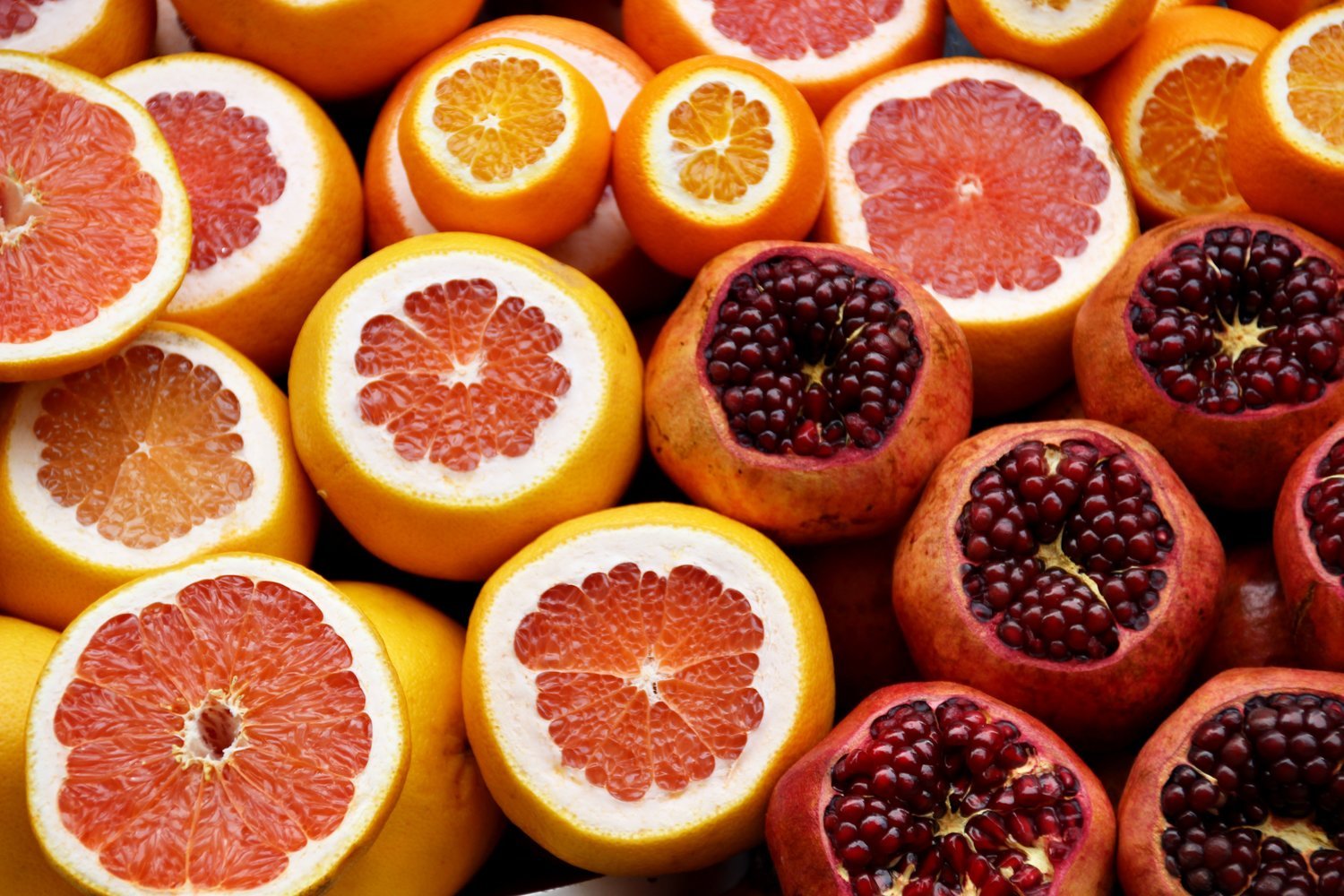How to Heal & Prevent Dry Skin
Dry skin. Living in the northeast this time of year, it’s sort of a fact of life.
Dropping temps with the season change is certainly a culprit—whatever moisture we do have in our skin, dry winter weather seems to suck it right out—but oftentimes skin issues are an inside job. Eczema, psoriasis and rosacea, for example, stem from issues and imbalances in the gut. Keratosis pillars, or “chicken skin” (those little bumps commonly found on arms and thighs), is often a symptom of a nutrient deficiency.
Even still, there are things you can do externally to help relieve symptoms.
Today I’m going to give you some ways to combat dry skin—from the inside out AND the outside in.
Nutrients for Nourished Skin
WATER & ELECTROLYTES
Our skin can become dry if our bodies are dehydrated. For proper hydration, we need not only water, but also electrolytes—specific minerals that have important functions in our body, like heartbeat regulation and muscle contraction.
It’s not enough to just hammer ourselves with water, we need these nutrients, too.
WHAT TO EAT
Fruits & Veggies: not only do they contain water, but they also contain the electrolytes that your body needs
Salt: Not all salt is created equal. Himalayan & Celtic Sea Salt both contain natural-occurring minerals and electrolytes.
Herbal tea: if water is less appealing in the cooler months
Homemade bone broth: bone broth contains water AND minerals, making it a super hydrating beverage. You can sip plain, or make soups and stews with the broth. Here's a good bone broth recipe to try.
Homemade Electrolyte Drink:
2 cups filtered water
Juice of 1 large lemon
1 T raw honey
1/8 - 1/4 tsp sea salt*
*adjust amount based on how coarse the grind
Stir to combine. If honey is solid, you may want to make this with warm water and then allow to cool.
Be sure to use good quality, nutrient dense salt.
OMEGA 3 FATTY ACIDS
Modern diets are unbalanced in essential fatty acid intake: we consume far more Omega 6 than Omega 3, which creates inflammation in the body. Increasing our intake of omega 3 fats is a good practice for many health issues, including dry skin. Higher omega 3 fats can reduce inflammatory skin conditions like acne and psoriasis.
This is purely anecdotal, but I once worked with a vegan who began supplementing with fish oil (containing omega 3 fatty acids) and right away noticed a favorable change in the texture of his skin.
WHAT TO EAT
Wild caught fatty fish like sardines, anchovies, herring, salmon (try this canned salmon salad recipe!)
Egg yolks from pasture-raised chickens
Grass fed beef
Consider: Omega 3 supplements from a trusted source
VITAMIN A
Rough, dry skin is a common sign of Vitamin A deficiency—as is Keratosis pillaris (chicken skin). Vitamin A is another nutrient lacking in the Standard American Diet. We overestimate the amount of Vitamin A we eat, as nutrition labels include beta-carotene as a Vitamin A source. But beta-carotene is actually a Vitamin A precursor, meaning that before our bodies can use it, it must first be converted to true Vitamin A (retinol).
Synthetic retinoids are used to treat acne, eczema, and psoriasis, but we should really focus on consuming natural sources of pre-formed Vitamin A.
WHAT TO EAT
Liver (Liver is a superfood, don’t dismiss the idea!)
Cod liver oil: This is a good brand
Cream, butter and ghee from grass fed animals (the grass fed part is important)
Egg yolks from pastured chickens
VITAMIN C
Higher intakes of dietary vitamin C have been correlated with a decreased dry skin. Vitamin C is also crucial for collagen production.
WHAT TO EAT
A wide variety of colorful plant foods including fruits, veggies, green leafies and fresh herbs.
PROBIOTICS
The health of our skin is linked to the health of our gut. Normalizing gut micro biome can dramatically improve eczema and psoriasis, amongst other skin issues.
We have microorganisms living in our intestines that help our bodies function properly. They help digest food, destroy disease, and produce nutrients—for starters. It is estimated that our bacteria outweigh our own cells 10 to 1 (there’s more of them than us!).
Since they play such a CRUCIAL role in our health, we want to continue to populate them by regularly consuming probiotic-rich food (food that contains beneficial microorganisms), and also keep them healthy by consuming foods with prebiotics, since prebiotics feed the microbes in our gut.
WHAT TO EAT
Probiotic-rich fermented foods: sauerkraut, kimchi, kefir, grass fed yogurt (for the love of Pistol Pete Maravich, please put down the Chobani)
Prebiotic-rich foods: chicory root, Jerusalem artichoke, dandelion greens, raw garlic, leeks, onion, asparagus
Consider: Probiotic supplementation - some good quality probiotics to try out include this brand and this brand and this brand.
Final Note About Food
Mind your digestion! As mentioned above, our gut impacts our skin. If you have consistent skin issues, you may need some digestive support. Check out my nutrition programs—it can get you started in the right direction. Digestion is EVERYTHING.
Practices to Help Combat Dry Skin
HUMIDIFIER
This essentially puts water back into your skin from the outside in. Run a humidifier during the day, and at night while you sleep. Be sure to clean it daily, so bacteria and mold don’t build up (I know it's annoying, but it's way better than having toxic sludge mist itself into your mouth). Humidifiers are also great to combat symptoms of the common cold, as the moisture can help to keep mucus membranes moist and doing their job! I own this one. But if I was a baller, I'd get this one.
SHOWER ONLY WHEN NECESSARY
If you have dry skin, you probably don’t want to shower everyday. When you do bathe, use a hydrating body wash free of parabens, fragrance, formaldehyde, Sodium lauryl sulfate (SLS), and Sodium laureth sulfate (SLES).
This body wash is free of all the above, and is made with nourishing marula and mongongo oils, which help to soften and protect skin while sealing in moisture.
SKIP THE WATER WHEN WASHING YOUR FACE
This Cleansing Balm removes makeup and cleanses the face without the use of water, so it doesn’t strip away moisture. Made with vitamin C, raspberry oil and cranberry seed oil, this cleanser is extremely hydrating and can also be used as an intensely nourishing face mask.
The balm can also be used to treat dry patches, windburn, chapped skin, rough elbows/knees/knuckles, eczema and psoriasis patches.
The Cleansing Balm comes with an organic muslin cloth to gently exfoliate skin while cleansing.
EXFOLIATE TO SLOUGH OFF DRY SKIN
Removing dead skin will help your skin retain moisture, so exfoliate before you moisturize for best results.
This Nourishing Cream Exfoliator uses non-abrasive jojoba beads to gently exfoliate, and organic coconut oil & aloe to soothe and hydrate.
Exfoliate your body when showering with this Sugar Body Scrub. It’s made with brown sugar to buff away dull skin, and mineral-rich plant oils to leave skin looking supple and smooth—it also smells amazing!
DRY SKIN BRUSH
Before showering, use a natural bristle brush to sweep over your body, starting with the feet and moving toward the heart. This not only sloughs off dry skin, but also increases circulation, helping skin appear more vibrant and healthy.
MOISTURIZE, MOISTURIZE, MOISTURIZE!
FACE
During the warmer months, you might be able to get away with lightweight formulas, but now that we're entering winter, consider switching to richer products, like a night cream. This one has organic coconut oil and aloe to hydrate and geranium and green tea to protect against dryness.
It's recommended that you still use SPF, even in the fall and winter. Go for a hydrating formula, like this Allure Best of Beauty winning tinted moisturizer with SPF 20.
If you haven't yet, add a face oil to your routine! It's my top favorite beauty product. Stay away from any synthetic oils, as they tend to sit on top of skin. This face oil contains pure plant oils, so it's easily absorbed for ultimate hydration.
New to face oils? Here's how to use:
Press three to four drops of oil into skin with fingertips and use it in place of moisturizer, or add a couple of drops to your favorite moisturizer to make it extra hydrating. I also love to mix in a drop to my tinted moisturizer each day.
BODY
To keep your skin smooth and supple, use a deeply moisturizing body oil on damp skin or, for extra moisture, add a few drops of oil to your favorite body lotion.
Important! When choosing oils and lotions, look for those made without any synthetic fragrance ingredients, as many are linked to health issues (allergies, asthma, hormone disruption). These can be hard to spot, since fragrance is considered a "trade secret." Shop with a trusted company who swears off synthetic fragrances!
This rich Body Butter is made with natural citrus fruit oils to add a light, fresh scent while it hydrates.
LIPS
This Lip Conditioner soothes and softens lips. You can also combine it with a little raw sugar for a DIY lip scrub.
Hopefully some of these suggestions can help you out this fall and winter. Don't hesitate to reach out to me with questions—especially if you need help finding safe, nontoxic skincare!







